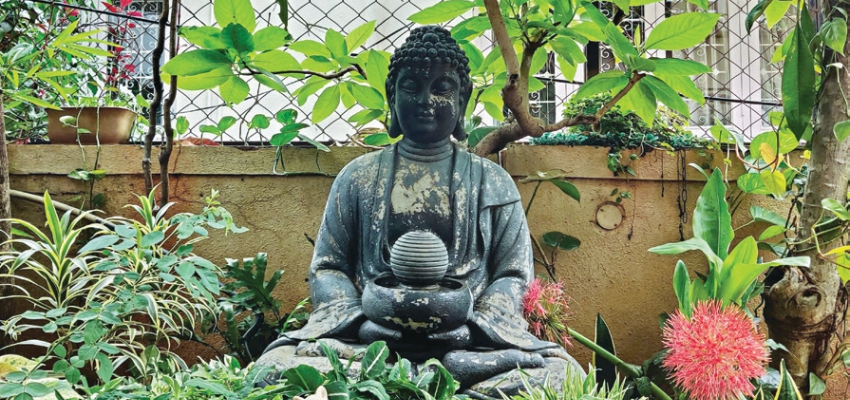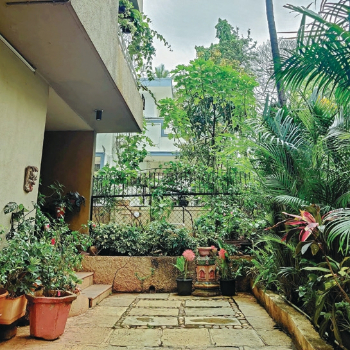Pots of Joy: Green for your home

With shrinking spaces and evolving lifestyles, potted plants are a fine way to bring greenery into our homes and lives. Here’s how
As urban living becomes increasingly compact, potted plants have emerged as a smart and stylish alternative to traditional gardening. The charm of container gardening lies in both, its practicality and flexibility. Potted plants can be moved to suit light, temperature, or simply aesthetics. They thrive in places where soil is unsuitable or rocky, making them ideal for balconies, office corners, kitchens or even bathrooms.
Container-wise

Selecting the right pot in terms of material, shape and size, is the first step. It must align with the plant’s size, water needs and root growth. Consider the eventual height achieved by the plant; in other words, dense foliage for cramped spaces is a no-no.
Unglazed earthen pots are a great choice. Their porous nature allows air circulation and moisture control, great for roots. They are easy to find, cost-effective, and not as heavy as cement pots. However, avoid coats of oil-based paints, as it diminishes their breathability.
Ensure each pot has a drainage hole at the base and place broken brick pieces over the hole to prevent clogging. Add a layer of dried leaves or grass, then fill the pot with equal parts garden soil and well-decomposed compost or cow dung manure. Leave some space at the top for watering.
Cement pots, although sturdy, heat up in summer and become cold in winter, impacting the plant. They need to be placed in shaded or sheltered spots depending on the season.
Different plants for different spaces

Potted plants can be broadly categorised into two types: foliage plants, with either green or colourful leaves, and flowering plants. Popular choices for green-leafed varieties include ferns, rubber plants, dracaena, philodendrons, and pilea. For a pop of colour, opt for maranta, calathea, crotons, zebrina, or rex begonias.
Flowering plants like chrysanthemums, anthuriums, azaleas, lilies, geraniums, and cock’s comb are seasonal but gorgeous.
Different rooms in the house have different microclimates and conditions, and plant placement should reflect this. TV rooms suit plants with lush green foliage such as Indian rubber, lily, alocasia and philodendron.
Writing tables look pretty with dwarf varieties like portulaca or rex begonias. For dining tables, try pilea, maranta, or maidenhair ferns. In kitchens, with dry air and higher temperatures, succulents and cacti do well. Bathrooms, which are more humid, can host money plants, beetle vines, orchids and tradescantia.
Lavender and lemongrass can freshen up toilets, while small-leaved plants like euphorbia or palms bring a sense of calm to bedrooms. Flowering plants such as miniature roses, hibiscus, lantana and ixora, flourish on balconies and terraces.
Caring for your greens
Watering should be done thoughtfully. A rose can be ideal for even distribution. In case of tender plants dip the pot in a water container.
Tap the pot gently, and if it makes a metallic sound, it likely needs water. Water until it flows from the drainage hole. Washing the leaves weekly keeps them healthy.
Fertilise every fortnight with liquid manure or ammonium sulfate or sodium nitrate mixed with water. Loosen the topsoil regularly to prevent acidity. Spray insecticides to cover all leaf surfaces.
Rotate pots every 8 to 10 days for even light exposure. Transplanting annually works and refreshes the soil, and encourages growth.